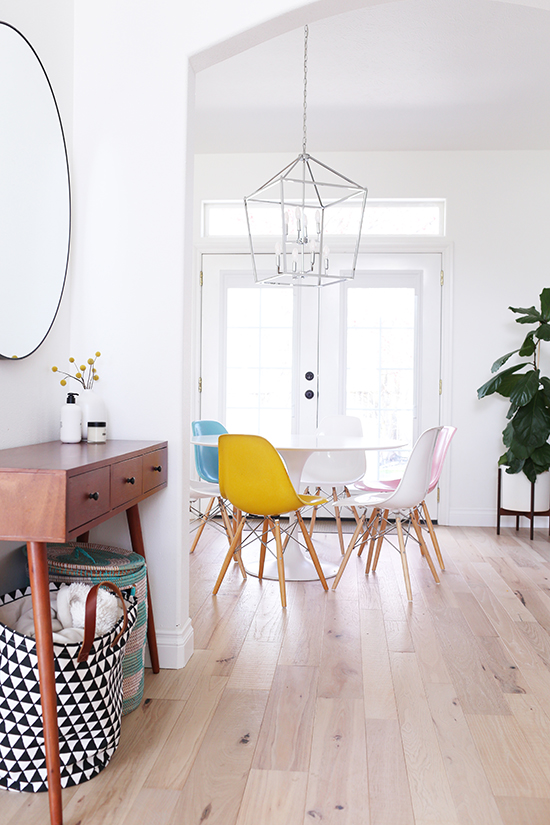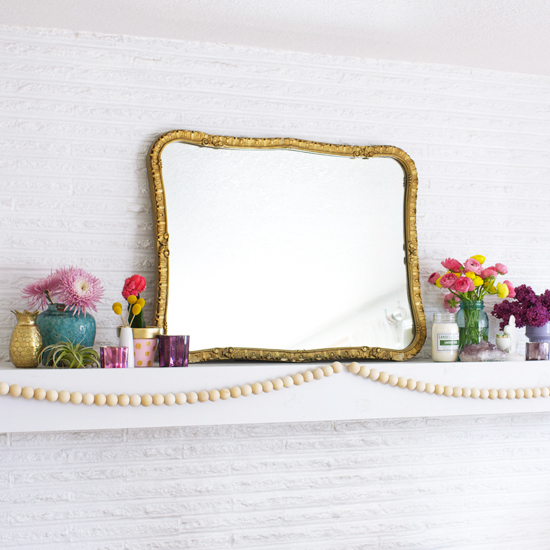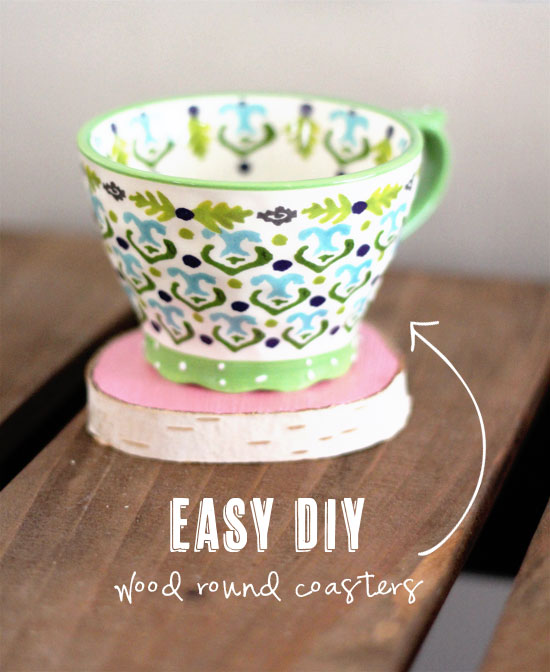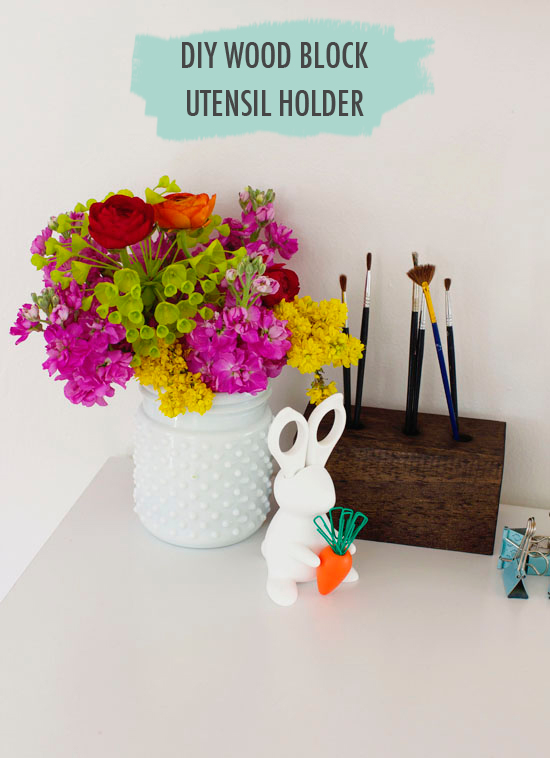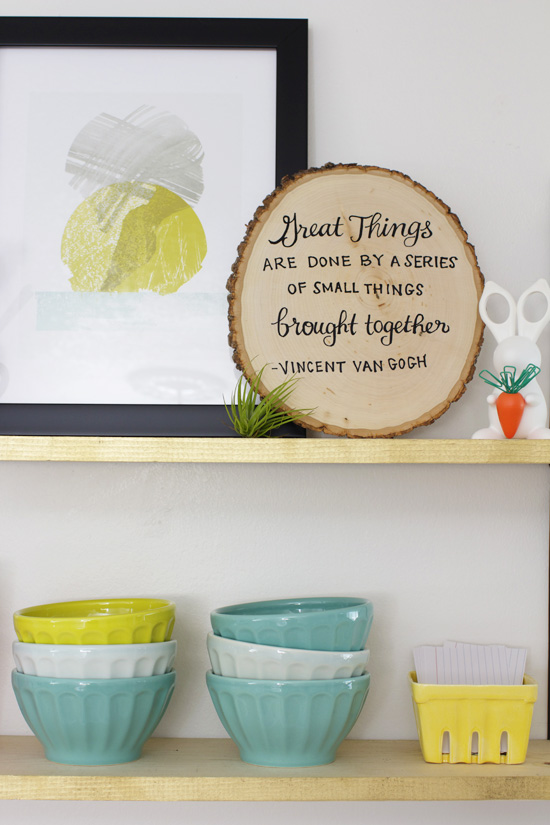26
I just found this post in my drafts! It has a lot of good info from when I was doing research for our flooring, and I'm hoping it can be helpful to some of you. Our floors are actually the thing that I get the most DMs about, so I know a lot of you have flooring questions...and I totally understand why. Unlike painting a wall, which is relatively inexpensive and easy to switch if you change your mind, flooring is expensive and replacing it is a major endeavor. It's a big disruption to your everyday life (we literally moved every piece of furniture and appliance from our main level into the garage) so it's definitely something you want to get right the first time. We ended up choosing this hickory engineered hardwood from Home Depot (you can read all about it here if you'd like). It's held up very well despite two toddler boys that are rough with it and spill food and drinks daily, and I think it was the right choice for this house! But the right answer might be different for you. Here are the pros and cons of different types of wood look floors, from all the research I did. Hope it's helpful to you!
Solid Hardwood
This is the real deal, and it's prized for a reason. 100% genuine hardwood, each plank is crafted from one solid piece of timber so it can be sanded down and refinished multiple times. This ability gives it great longevity (it's how 100-year-old houses can still be rocking their original hardwood floors). It typically comes in 3/4" thickness and locks together with a "tongue and groove" system. It comes in dozens of different wood species and can be stained any shade, light to dark. Solid hardwood is beautiful and timeless, and obviously the most authentic of any wood look product. But it does have some drawbacks. It's always nailed down or stapled (never floated) so it cannot be installed over concrete subfloors. It's generally more expensive and more difficult to install. It's also susceptible to water damage so it's not recommended for bathrooms, mud rooms, and other areas that get a lot of moisture.
Engineered Hardwood
Engineered hardwood has a thin veneer of real wood on top, backed by layers of plywood or fiberboard. This makes it both less expensive than solid hardwood, and less susceptible to moisture. It typically comes in either 3/8" or 1/2" thickness, and can be nailed, glued or "floated" (making it acceptable for rooms with concrete subfloors). It's easier to install than solid hardwood, especially if you get one that clicks together as a floating floor. And because it's more water-resistant, it's a better choice for kitchens and areas that get moisture. Because the top layer IS real hardwood, it looks more genuine than other hardwood alternatives. You can choose from just about any wood species for a wide variety of looks. One of the most popular choices is engineered dark grey flooring, which looks perfect in any room. But a big drawback is that engineered wood cannot be sanded down and refinished as much as solid hardwood, since the top layer is so thin (most types will only allow a couple refinishings, and some none at all).
Bamboo
Bamboo flooring is a renewable and affordable wood alternative that's made of bamboo strands that are sliced and shredded, woven together, then pressed into boards with heat and glue. Bamboo (technically a grass) is actually more durable than most species of wood, plus it's easy to clean and generally costs less. Some bamboo floors can be refinished, but not as many times as solid hardwood. Bamboo flooring looks similar to wood from a distance, but up close you'll typically see thin stripes with distinctive "knuckles" across the boards (like on a stalk of bamboo). As for moisture resistance, it's similar to solid hardwood. If you prefer darker wood, one negative is that bamboo is naturally light in color. It can be "carbonized" for a darker appearance, but I learned that this process softens it and makes it more prone to scratches.
Luxury Vinyl Planks
If you love the look of wood but don't want to worry about spills and moisture, luxury vinyl planks are a smart and practical choice. The surface layer is printed and embossed to mimic the look and feel of real wood--but they're actually made of all synthetic materials. A huge pro is that vinyl flooring is 100% waterproof, for an extremely kid-and-pet-friendly option. As such, luxury vinyl planks can work in any room in the house, including kitchens, bathrooms, and basements. The individual planks lock together for a DIY-friendly floating installation. Their price is also highly appealing, even less than engineered wood. But there are cons too. The printed patterns will repeat over and over, which looks more artificial than the natural variation of real wood. And your subfloor will need to be perfectly smooth before installation, as vinyl will show bumps and unevenness more than more rigid options.
Laminate
Laminate is what our house had before. It's water resistant, scratch resistant, easy to clean, and budget-friendly. The core is made of fiberboard, with a photographic layer on top that mimics the look of real wood. It's pretty realistic looking, although again the repeating "wood" patterns can be a giveaway that it's not the real deal. Another negative of laminate is that it can't be repaired. If your floors get dinged and chipped by objects dropping on them (as ours did), you can't sand and restain them like you could with hardwood. On the plus side, it's easier to install than hardwood floors and the cost of installation is cheaper.
Wood Look Tile
One last alternative to wood floors: wood look tile. Virtually scratch-proof and waterproof, these can be an appealing low-maintenance option. They can look remarkably like wood, will last a very long time, and can be installed anywhere including over concrete subfloors. But wood look tile has some big cons too. Tile is more slippery than wood, it's harder and not as comfortable underfoot, it feels colder, and things are more likely to break if you drop them on tile. Installation is also expensive and labor-intensive, especially for a large amount of square footage. And of course, tile can't be refinished if you change your mind and want a different color down the road.
What kind of floors do you have? What do you prefer? Do you have any other questions about flooring??

